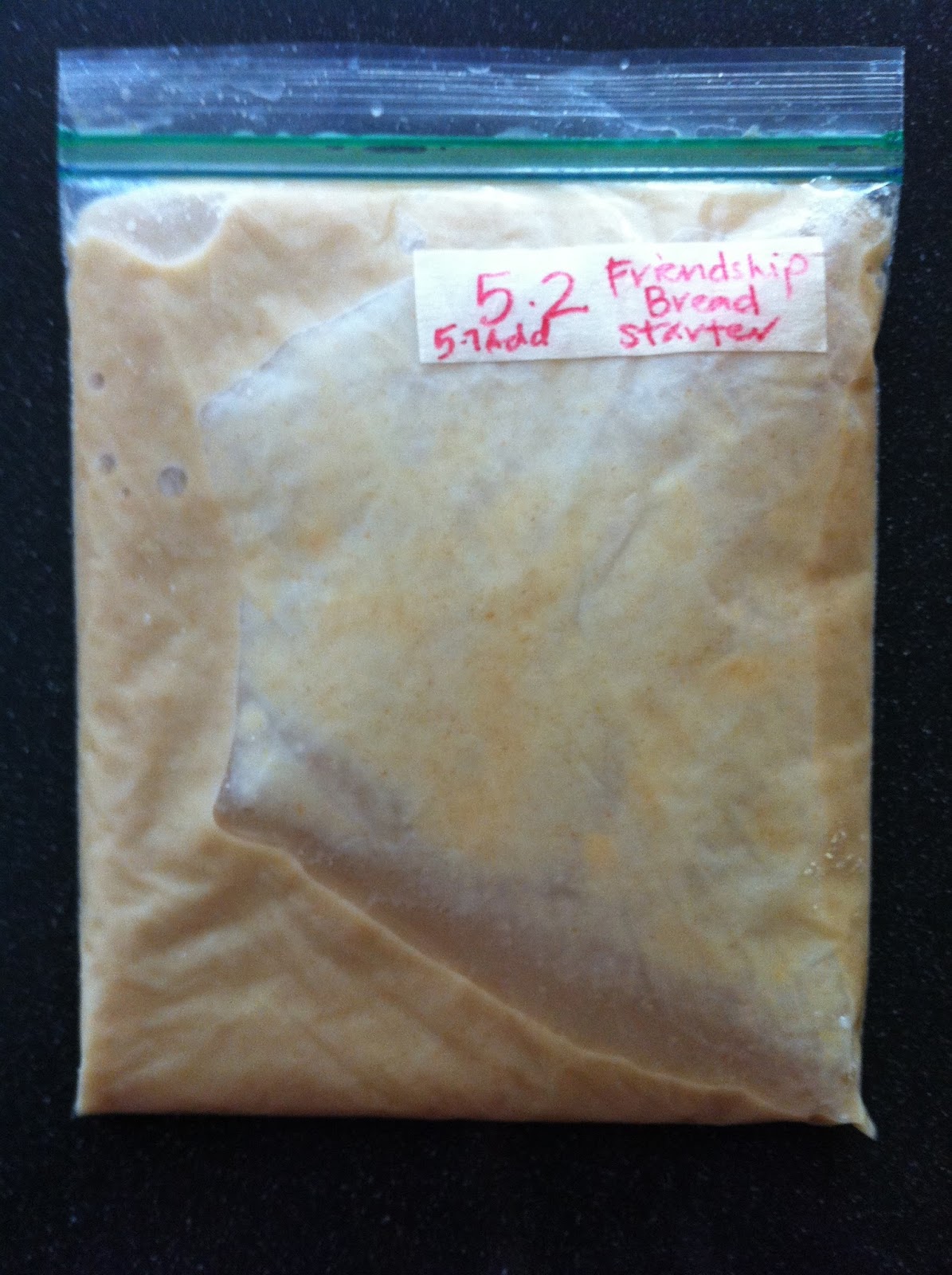A few months ago Daughter gave me a bag of Amish Friendship Bread starter. It was given to her by one of the other teachers at her school. I wasn't sure if this was a blessing or a curse. If you've ever been given some starter, then you know what I'm talking about. The blessing is that someone thought of you and wanted to share something with you. The curse is that the starter is needy and takes constant feeding of flour, sugar and milk every five days or it will die. If you feed the starter as recommended, then you end up with lots of starter that you need to either make bread with or share with lots of your friends.
So, I thought, I'd try it once, make a few loaves of bread and then toss the starter. After all, who has that many friends and all that time for feeding and baking?
Well, I thought wrong. It turns out that Guv'nor really likes the bread. It goes well with his coffee in the morning. It's really more like cake, but whose counting calories?
So I decided if I was going to be feeding the starter and making the bread regularly, I had to streamline the process. Plus I wanted to try to make it a little more healthy if I could. I did some searching on the internet and found several places with variations to the recipe. I thought the best information was at FriendshipBreadKitchen. It even gives a recipe for making a starter from scratch in case you don't have friends that give you some.
I decided I wasn't going to share the starter. I know, that's
the whole purpose behind the friendship bread. Oh well. The first time I
tried to share my starter I had trouble getting anyone who wanted it.
So once I decided I wasn't going to share, then I didn't need to worry about multiplying and building up the starter. Instead, I only keep about a cup of starter at a time. To this, I add 1/2 cup each of flour, sugar and milk. This not only keeps you from ending up with too much starter, it also uses less ingredients along the way. I learned this process with my sourdough bread starter. It's less wasteful to toss a little starter at the beginning of the process, than to toss a lot of starter at the end.
I got rid of the zippy bag, too. It was just too messy for me. I decided to keep my starter in a plastic tub with a lid. I did away with the box of pudding that was called for in the recipe. Box pudding has too many unknown ingredients. I also use our free range eggs and wholewheat flour.
I've learned along the way that the starter isn't as delicate as you're lead to believe. As long as you add the three ingredients every few days (5-6), the starter stays healthy. You can also make bread at any point in the process as long as you have enough starter for the recipe and some to keep as your starter.
Adapted recipe:
1 C starter
3 free range eggs
1 C safflower oil
1/2 C raw milk
1 C natural cane sugar
1/2 t vanilla
2 t cinnamon
2 C wholewheat flour or unbleached white
1-1/2 t baking powder
1/2 t salt
1/2 t baking soda
Mix ingredients. Pour into two loaf pans, greased with butter and dusted with cinnamon sugar. Sprinkle more cinnamon sugar on the top.
Bake @325 degrees for 45-60 minutes.
The Guv'nor likes raisins, so I've started adding raisins to one loaf. Daughter likes chocolate chips, so I add them to the other loaf.












Have you tried using coconut oil instead of safflower or regular vegetable oil? My husband prefers coconut oil to just about any oil.
ReplyDeleteI haven't tried coconut oil in this. We also love it and use it on many things. It's just more expensive. My theory is to save the good stuff for things where you can really taste the difference.
DeleteI would have been happy to be on the receiving end if it were gluten free. I used to keep a cake starter going years and years ago, but it's something I can't eat anymore.
ReplyDeleteWell, you're in luck. The website FriendshipBreadKitchen.com has gluten free recipes including how to make a gluten free starter.
Delete